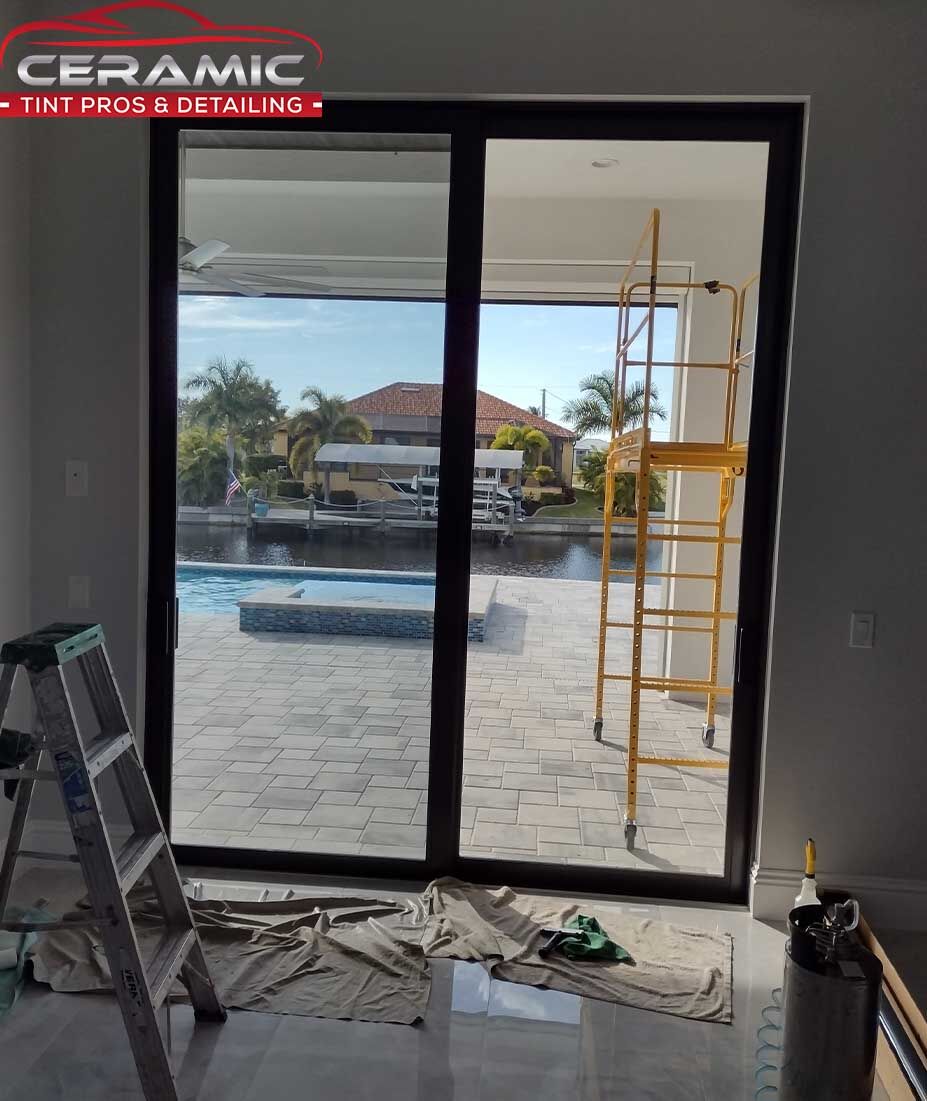Just How Residential Window Tinting Boosts Your Home's Power Efficiency
Residential home window tinting offers an engaging option for home owners seeking to improve power efficiency within their living areas. By using specialized films to windows, it successfully lowers heat transfer, thereby supporting indoor temperatures and decreasing the demand for excessive heating or cooling.
Understanding Window Tinting
Understanding window tinting is necessary for home owners looking for to boost both convenience and power performance in their living rooms. Residential Window Tint. Home window tinting entails the application of a slim movie to the inside or outside surface of glass windows. This film can considerably modulate the amount of sunlight and heat that enters a home, hence affecting indoor climate conditions
There are numerous kinds of home window tinting films available, each with distinct residential or commercial properties. Colored films absorb solar power, while reflective movies deflect it away from the glass surface. Ceramic movies use a balance of visibility and warmth denial, making them a prominent choice among home owners. The performance of window tinting is frequently measured by its Visible Light Transmission (VLT) percent, which suggests how much light can travel through the movie.
Advantages of Power Efficiency
Window tinting not only improves appearances however additionally plays a substantial duty in enhancing energy effectiveness within domestic spaces. By lowering heat transfer via windows, colored movies produce an extra stable interior environment, which can cause substantial reductions in power consumption for cooling and heating. This energy effectiveness converts right into lower utility costs, supplying house owners with substantial long-term savings.

In addition, home window tinting improves the comfort of living spaces. By minimizing glow and blocking damaging UV rays, tinted home windows produce a more positive atmosphere, which can result in boosted wellness for residents. The defense versus UV rays also assists preserve furnishings and flooring from fading, adding to the longevity of house products.
How Tinting Functions
Tinting films run through a mix of advanced products and technologies made to manage the quantity of solar energy getting in a home. Mainly made up of polyester, these films often integrate ceramic or metal particles that reflect and take in heat. This double capacity enables them to dramatically decrease the infiltration of ultraviolet (UV) rays and infrared radiation while allowing noticeable light to travel through.
The performance of window tinting is gauged by its solar warmth gain read more coefficient (SHGC), which shows how much solar power is transferred via the window. Lower SHGC worths are more suitable as they signify better heat being rejected. In addition, home window tints can feature a range of tones, allowing property owners to tailor their visual preferences while enhancing energy effectiveness.
Furthermore, these films serve as an obstacle, protecting against heat loss during chillier months by mirroring indoor heat back right into the space. This thermal insulation effect matches the cooling advantages obtained throughout warmer months, adding to a balanced indoor climate year-round. By taking care of solar power efficiently, property window tinting not just boosts comfort yet likewise plays an essential function in reducing energy consumption and lowering energy expenses.
Picking the Right Color

There are various kinds of home window movies offered, consisting of colored, metalized, and ceramic. Ceramic movies supply outstanding heat control without jeopardizing exposure and are highly resilient, making them a prominent selection.
Noticeable light transmission (VLT) is an additional essential variable, as it suggests the quantity of all-natural light that can pass through the tinted glass. Home owners must select a tint with a VLT that matches their illumination preferences while still providing sufficient glare decrease.
Furthermore, analyzing the solar warmth gain coefficient (SHGC) can help establish just how well a color can block warm from sunlight. A lower SHGC shows better warmth control, eventually boosting energy performance.
Installation and Maintenance Tips
Appropriate installment and maintenance are crucial elements in making best use of the advantages of household window tinting. Specialists additionally use specialized tools and techniques, which can enhance the sturdiness and efficiency of the color.
Complying with setup, upkeep is important to extend the life of the window movie. It is suggested to wait at the very least 30 days prior to cleansing the tinted home windows to enable the sticky to treat fully.
Attending to these problems promptly can protect against more damages and maintain energy efficiency. By sticking to these installment and upkeep ideas, home owners can ensure their home window tinting continues to provide significant energy cost savings and convenience for years to come.
Final Thought
In verdict, property home window tinting serves as a reliable service here are the findings for enhancing power efficiency within homes. By reducing warm transfer and blocking damaging UV rays, window films contribute to decrease power additional reading consumption and boosted indoor convenience.
Home window tinting entails the application of a slim film to the interior or outside surface of glass windows. By reducing heat transfer via windows, tinted films produce a more stable interior climate, which can lead to considerable decreases in energy usage for heating and cooling.The performance of home window tinting is gauged by its solar heat gain coefficient (SHGC), which suggests just how much solar power is transferred through the window. By managing solar power properly, domestic window tinting not only improves convenience yet additionally plays an important function in minimizing power usage and decreasing energy expenses.
By lowering warmth transfer and blocking hazardous UV rays, home window movies add to lower power usage and boosted indoor comfort.
Comments on “Residential Window Tint: Enhance Convenience and Reduce Glare Indoors”